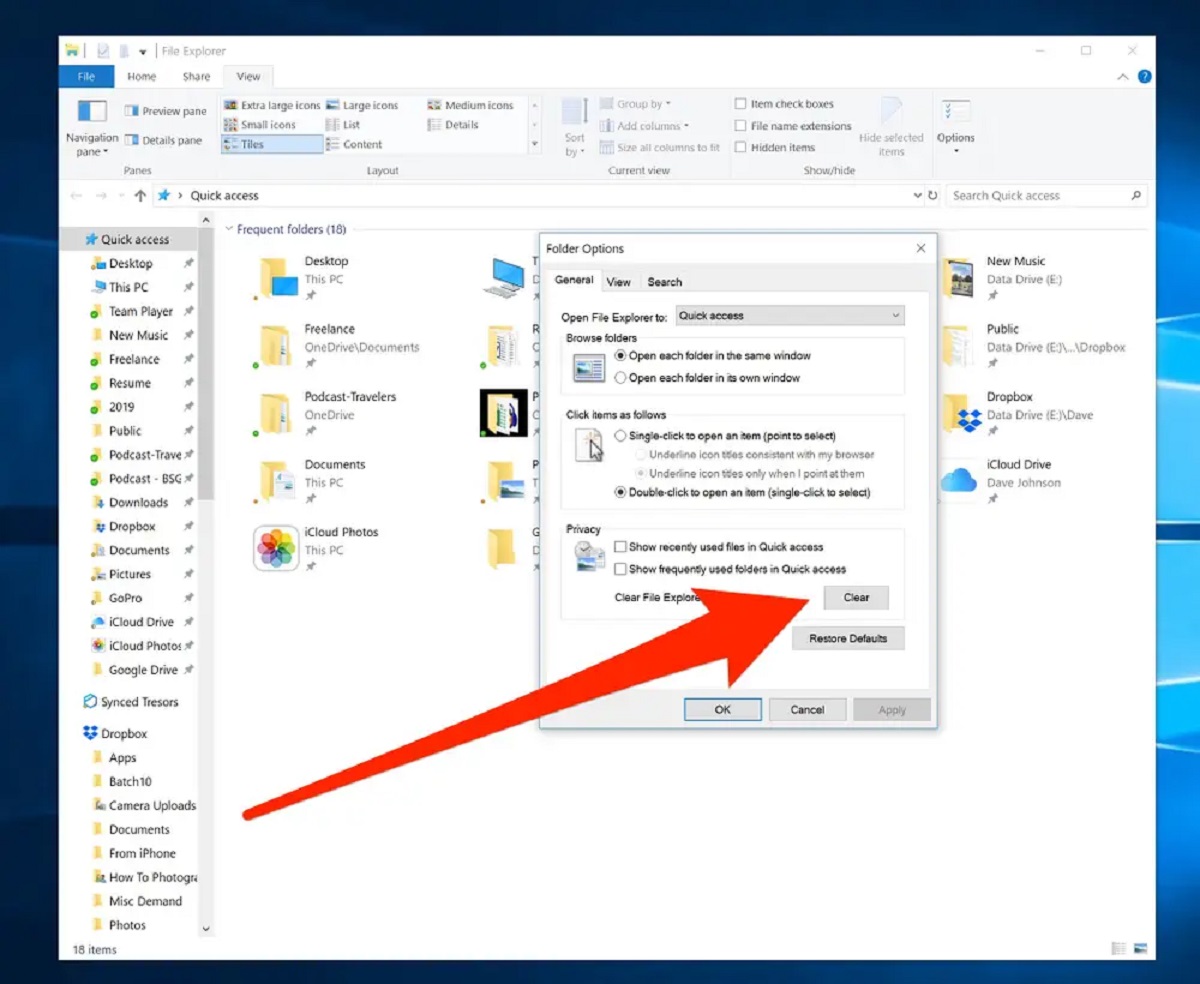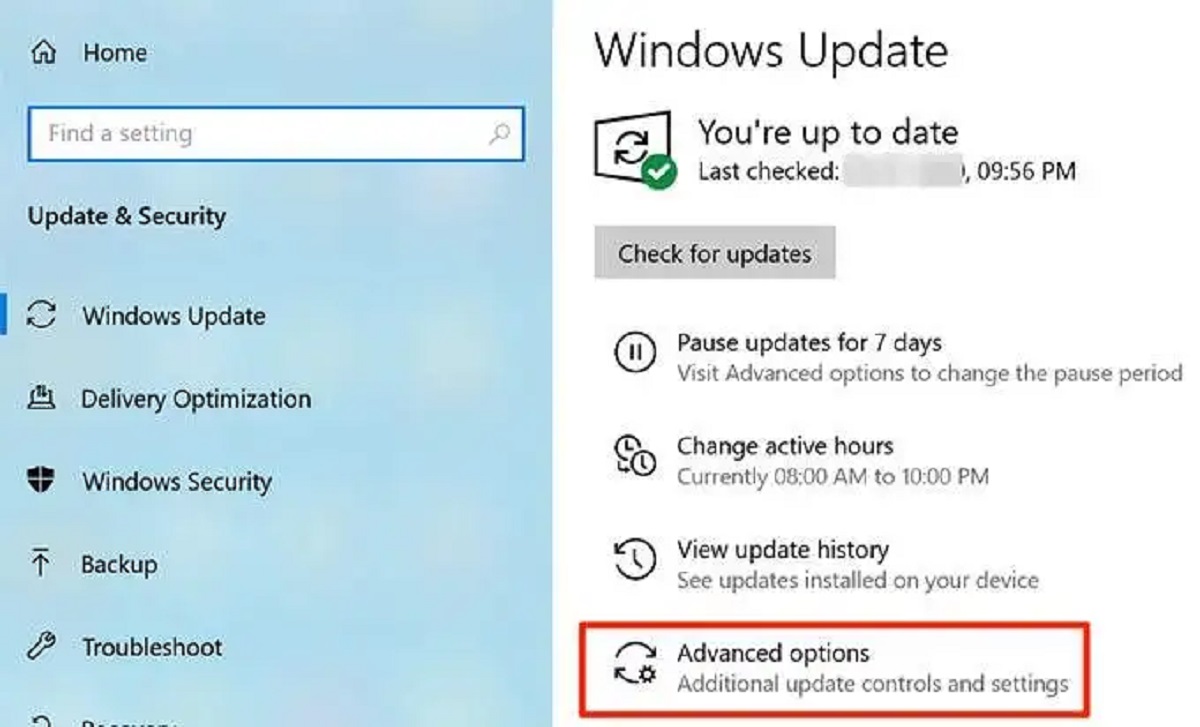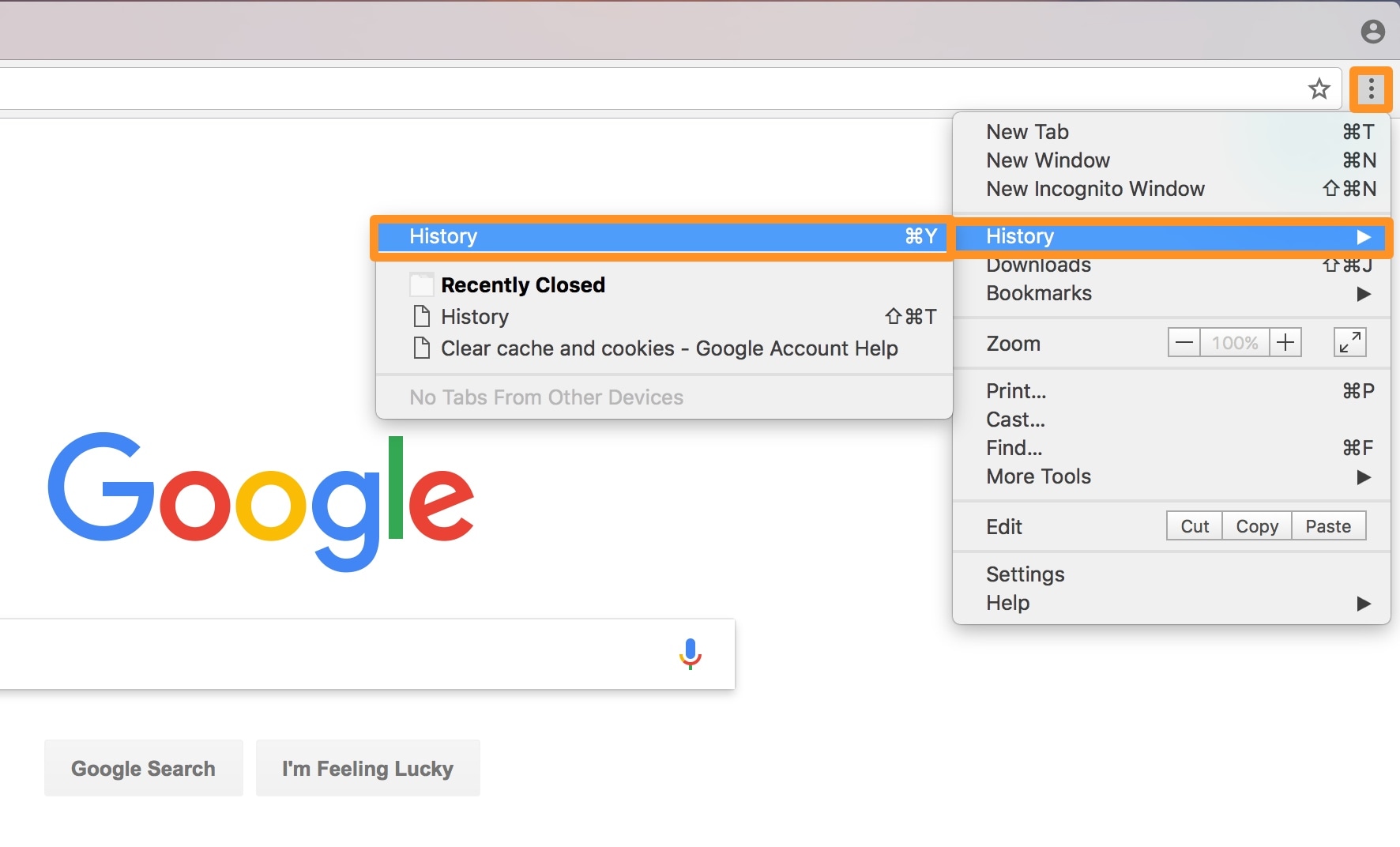Introduction
When using a computer, the cache plays an important role in optimizing the browsing experience. It helps to speed up the loading of web pages, store temporary data, and improve overall performance. However, over time, the cache can become cluttered and increase the risk of encountering issues such as slow browsing, error messages, or even security vulnerabilities. To prevent these problems and ensure smooth operation, it is important to regularly clear the cache on your PC.
The cache is a storage location that temporarily holds data that your computer or web browser may need to access quickly. It stores various types of information, including website graphics, scripts, CSS files, and even login credentials. By storing this data locally, the browser can retrieve it faster, reducing the load time of web pages.
While the cache offers advantages in terms of browsing speed and convenience, it can also have drawbacks. As you continue to use your computer, the cache accumulates a large amount of data that may no longer be relevant or necessary. This can lead to conflicts between cached data and updated versions of websites, resulting in display errors or even preventing pages from loading correctly.
Clearing the cache on your PC has several benefits. Firstly, it frees up storage space on your computer’s hard drive, which can help improve overall system performance. Secondly, it ensures that your browser is accessing the most up-to-date versions of websites, reducing the risk of compatibility issues or outdated information. Lastly, clearing the cache can also enhance your privacy and security by removing saved login credentials or sensitive data.
In the following sections, we will explore various methods to clear the cache on your PC. We will cover how to clear cache on Windows, including browser cache, cache on specific applications, system cache, and DNS cache. By refreshing these caches, you can optimize your computer’s performance, resolve browsing issues, and maintain a smooth and secure online experience.
What is Cache?
Cache refers to a temporary storage location that stores copies of data to be accessed quickly. It is used by computers and web browsers to improve performance and expedite the loading of web pages. When you visit a website, your browser stores various types of data such as images, scripts, CSS files, and other resources in the cache. The next time you visit the same website, instead of re-downloading all the files, the browser retrieves the data from the cache, resulting in faster loading times.
The cache works on the principle of reusing previously accessed data to minimize the need for repetitive downloads. It stores this data in a local storage location, typically on your computer’s hard drive or in memory. By storing frequently accessed data in the cache, your computer or browser reduces the time and resources required to retrieve and display web content.
When you browse the web, your browser sends requests to web servers to fetch the necessary files to display a webpage. The server responds by sending the requested files, which are then stored in the cache. This process is commonly referred to as caching. When you visit the same page again, the browser checks the cache first to see if it already has the required files. If the files are found in the cache and they haven’t expired, the browser uses the cached version instead of re-downloading them.
The cache is essential for optimizing browsing performance, especially on websites that have a large number of images or other resources. By storing these resources in the cache, the browser can load the page more quickly and reduce the amount of data that needs to be transmitted over the internet. This not only improves the user experience but also reduces the load on web servers and conserves bandwidth.
While the cache offers significant advantages in terms of speed and efficiency, it can also cause certain issues. For example, if a website updates its files, but your browser still relies on the cached version, you may see outdated content or experience display errors. Clearing the cache periodically helps address these issues and ensures that your browser retrieves the most recent versions of web content, providing you with an up-to-date browsing experience.
Why Clear Cache?
Clearing the cache on your PC is an important maintenance task that offers several benefits for your browsing experience and overall system performance. Here are some key reasons why you should regularly clear the cache:
1. Improve Browsing Speed: Over time, the cache can become cluttered with outdated or unnecessary files. These files can slow down your browser’s performance and lead to longer page load times. By clearing the cache, you can free up space and allow your browser to retrieve the most recent versions of web pages, resulting in faster and more efficient browsing.
2. Access Updated Content: Websites frequently update their content, including graphics, scripts, and other resources. If your browser relies on the cached version of these files, you may not see the most recent updates and changes. Clearing the cache ensures that your browser retrieves the latest versions of web content, allowing you to access the most up-to-date information and enjoy a more accurate browsing experience.
3. Fix Display Issues: When there are conflicts between cached data and updated versions of websites, display issues can occur. These issues may include broken images, distorted layouts, or missing stylesheets. Clearing the cache helps resolve such conflicts by forcing the browser to retrieve fresh copies of the files, ensuring that web pages are displayed correctly and as intended.
4. Preserve Privacy and Security: The cache stores various types of data, including login credentials, personal information, and browsing history. Clearing the cache regularly helps protect your privacy by removing this sensitive data from your computer. Additionally, it can mitigate security risks, as cached data might include temporary files or scripts that could potentially be exploited by malicious actors.
5. Optimize System Performance: The cache occupies storage space on your computer’s hard drive. As the cache accumulates more files, it can take up valuable disk space and potentially contribute to decreased system performance. By clearing the cache, you can free up storage space, which can lead to improved overall system performance and quicker response times.
By regularly clearing the cache on your PC, you can enhance your browsing speed, access the latest content, fix display issues, protect your privacy and security, and optimize your system’s performance. It is a simple yet effective maintenance task that ensures a smooth and enjoyable online experience.
Ways to Clear Cache on PC
Clearing the cache on your PC can be done through various methods, depending on the specific cache you want to clear. Let’s explore some of the common ways to clear cache on your PC:
1. Clearing Browser Cache: The most common cache that users need to clear is the browser cache. Each web browser has its own cache storage where it saves website data. To clear the browser cache, you can typically access the browser’s settings or preferences menu and locate the option to clear browsing data. This will remove all cached files, including images, scripts, and other resources, from your browser and force it to retrieve fresh data the next time you visit a website.
2. Clearing Cache on Specific Applications: In addition to web browsers, other applications on your PC may also have their own cache that needs to be cleared. These applications can include media players, email clients, or even productivity software. To clear the cache for these specific applications, you may need to access their settings or preferences menu and look for options related to clearing cache or temporary files. Be sure to follow the instructions specific to each application to clear their respective caches.
3. Clearing System Cache: The system cache refers to temporary files stored by your operating system. These files can include system updates, installation packages, or other temporary data generated by your operating system. Clearing the system cache can help free up disk space and potentially improve system performance. To clear the system cache on Windows, you can use the Disk Cleanup utility provided by the operating system or third-party software designed for cache cleaning.
4. Clearing DNS Cache: DNS cache is used by your computer to store information about websites’ IP addresses. Clearing the DNS cache can be helpful if you are experiencing issues with accessing certain websites, as it forces your computer to fetch the latest IP address information. To clear the DNS cache on Windows, you can use the Command Prompt and run the “ipconfig /flushdns” command. On macOS, you can clear the DNS cache by using the Terminal and running the “sudo killall -HUP mDNSResponder” command.
By utilizing these methods to clear cache on your PC, you can ensure that your browser and applications retrieve the most updated data, free up disk space, and maintain optimal system performance. It is recommended to perform cache clearing regularly to keep your PC running smoothly and ensure a seamless browsing experience.
How to Clear Cache on Windows
Clearing the cache on Windows is a straightforward process that can be done through various built-in tools and settings. Let’s explore the steps to clear cache on Windows:
1. Clearing Browser Cache: To clear the cache in popular web browsers like Google Chrome, Mozilla Firefox, or Microsoft Edge, you can follow these general steps:
- Open the browser and click on the menu icon (typically represented by three dots or lines) located at the top right corner of the window.
- Select “Settings” or “Options” from the dropdown menu.
- Scroll down and find the “Privacy and Security” or “Privacy” section.
- Look for the option to clear browsing data or clear cache.
- Check the box next to “Cached images and files” or similar, and any other options you want to clear.
- Click on “Clear” or “Clear data” to remove the cached files from your browser.
2. Clearing System Cache: Windows provides a built-in utility called Disk Cleanup that allows you to clear various types of temporary files, including system cache. Here’s how to use it:
- Press the “Windows” key on your keyboard and type “Disk Cleanup” in the search bar.
- Click on the “Disk Cleanup” application from the search results.
- Select the drive you want to clean up (typically the C: drive).
- Click on “OK” to start the scanning process.
- Once the scan is complete, the Disk Cleanup window will appear.
- Check the box next to “Temporary files” or any other types of files you want to remove.
- Click on “OK” and then “Delete Files” to clear the selected cache files.
3. Clearing DNS Cache: To clear the DNS cache on Windows, follow these steps:
- Press the “Windows” key on your keyboard and type “Command Prompt” in the search bar.
- Right-click on the “Command Prompt” application from the search results and select “Run as administrator”.
- In the Command Prompt window, type “ipconfig /flushdns” and press Enter.
- You should see a message confirming that the DNS Resolver Cache has been successfully flushed.
By following these steps, you can easily clear browser cache, system cache, and DNS cache on your Windows PC. Regularly clearing the cache helps maintain optimal system performance, resolve browsing issues, and ensure a smooth and enjoyable computing experience.
Clearing Browser Cache
Clearing the browser cache is an essential step in optimizing your browsing experience and resolving certain issues that may arise from outdated or corrupted cached data. Here’s how you can clear the browser cache in popular web browsers:
Google Chrome:
- Open Google Chrome and click on the menu icon (three dots) located at the top right corner of the window.
- Select “More Tools” from the dropdown menu and then click on “Clear browsing data.”
- In the “Clear browsing data” window, select the time range for which you want to clear the cache (e.g., Last hour, Last 24 hours, Last 7 days, etc.).
- Check the box next to “Cached images and files.”
- If you want to clear other types of browsing data like cookies or browsing history, you can select those options as well.
- Click on the “Clear data” button to clear the selected cache.
Mozilla Firefox:
- Open Mozilla Firefox and click on the menu icon (three horizontal lines) located at the top right corner of the window.
- Select “Options” or “Preferences” from the dropdown menu.
- In the left sidebar, click on “Privacy & Security.”
- Scroll down to the “Cookies and Site Data” section and click on “Clear data.”
- Ensure the box next to “Cached Web Content” is checked.
- You can also select other data types you want to clear, such as cookies or browsing history.
- Click on the “Clear” button to clear the selected cache.
Microsoft Edge:
- Open Microsoft Edge and click on the menu icon (three horizontal dots) located at the top right corner of the window.
- Select “Settings” from the dropdown menu.
- Under the “Clear browsing data” section, click on the “Choose what to clear” button.
- Check the box next to “Cached data and files.”
- You can also select other data types you want to clear, such as cookies or browsing history.
- Click on the “Clear” button to clear the selected cache.
The process of clearing the browser cache may vary slightly depending on the version and settings of your specific browser. If you’re using a different browser, you can usually find the option to clear the cache in the browser’s settings or preferences menu. Remember to close and reopen your browser after clearing the cache for the changes to take effect.
By regularly clearing the browser cache, you can ensure that your browser fetches the most up-to-date versions of websites, resolve display issues caused by cached data, and improve the overall performance of your browsing experience.
Clearing Cache on Specific Applications
In addition to web browsers, many other applications on your PC also have their own cache storage. Clearing the cache for these specific applications can help resolve issues, free up disk space, and improve overall performance. Here’s how you can clear cache on specific applications:
Media Players: Media players like VLC or Windows Media Player often create a cache to store temporary data while playing media files. To clear the cache in these applications:
- Open the media player application.
- Go to the settings or preferences menu.
- Look for the option related to cache or temporary files.
- Click on the option to clear the cache.
- Follow any prompts or instructions to complete the cache clearing process.
Email Clients: Email clients such as Microsoft Outlook or Mozilla Thunderbird also have a cache to store attachments, email data, and other temporary files. To clear the cache in these applications:
- Open the email client program.
- Go to the settings or options menu.
- Look for the option related to cache or temporary files.
- Select the cache option and click on “Clear” or “Delete”.
- Confirm the action if prompted.
Productivity Software: Applications like Microsoft Office or Adobe Creative Suite may create temporary files or cache data to enhance performance. To clear the cache in these applications:
- Open the specific application (e.g., Microsoft Word, Adobe Photoshop).
- Go to the settings or preferences menu.
- Look for the option related to cache or temporary files.
- Select the cache option and click on “Clear” or “Delete”.
- Follow any prompts or instructions to complete the cache clearing process.
It’s important to note that the location and options to clear cache may vary depending on the specific application. If you’re unsure about how to clear the cache in a particular application, referring to the application’s documentation or online resources can provide you with the necessary steps.
By clearing the cache on specific applications, you can resolve issues related to outdated or corrupted cached data, free up disk space, and ensure optimal performance. Performing this maintenance task periodically can help maintain the efficiency of these applications and enhance your overall computing experience.
Clearing System Cache
Clearing the system cache on your Windows PC can help improve performance, free up disk space, and resolve issues related to temporary files and outdated data. Here are a few methods to clear the system cache:
Using Disk Cleanup:
- Press the “Windows” key on your keyboard and type “Disk Cleanup” in the search bar.
- Click on the “Disk Cleanup” application from the search results.
- Select the drive you want to clean up (usually the C: drive).
- Click on “OK” to start the scanning process.
- Once the scan is complete, the Disk Cleanup window will appear.
- From the list of file types, select the types of files you want to remove (e.g., Temporary files, Recycle Bin).
- Click on “OK” and then click on “Delete Files” to clear the selected cache and temporary files.
Using Third-Party Cleaning Software:
There are also third-party cleaning software available that can help you clear out system cache and other temporary files on your PC. These tools often offer more advanced features and options for clearing cache. Some popular third-party cleaning applications include CCleaner, Wise Disk Cleaner, and BleachBit. Make sure to download and use these tools from reputable sources.
Windows System File Checker:
The Windows System File Checker is a built-in utility that can help you scan and repair corrupted system files, including cache files. Here’s how to use it:
- Press the “Windows” key on your keyboard and type “Command Prompt” in the search bar.
- Right-click on the “Command Prompt” application from the search results and select “Run as administrator”.
- In the Command Prompt window, type “sfc /scannow” and press Enter.
- Wait for the scanning process to complete, as the utility will identify and attempt to repair any corrupted system files, including cache files.
Clearing the system cache can help improve system performance, free up disk space, and resolve issues related to temporary files and data. It is recommended to perform this maintenance task periodically to keep your system running smoothly and efficiently.
Clearing DNS Cache
Clearing the DNS cache on your Windows PC can help resolve certain network issues, such as difficulty accessing certain websites or outdated IP address information. Here’s how you can clear the DNS cache:
Using Command Prompt:
- Press the “Windows” key on your keyboard and type “Command Prompt” in the search bar.
- Right-click on the “Command Prompt” application from the search results and select “Run as administrator”.
- In the Command Prompt window, type “ipconfig /flushdns” and press Enter.
- Wait for the process to complete, as the command will flush the DNS resolver cache and remove any cached DNS entries.
- You should see a message confirming that the DNS Resolver Cache has been successfully flushed.
Using Windows PowerShell:
- Press the “Windows” key on your keyboard and type “PowerShell” in the search bar.
- Right-click on the “Windows PowerShell” application from the search results and select “Run as administrator”.
- In the PowerShell window, type “Clear-DnsClientCache” and press Enter.
- Wait for the process to complete, as the command will clear the DNS client resolver cache.
- You should see a message confirming that the DNS client cache has been successfully cleared.
Clearing the DNS cache can help resolve issues related to domain name lookups and ensure that your computer fetches the most up-to-date IP address information. This can be particularly useful if you are experiencing difficulties accessing certain websites or if they appear to be loading incorrectly.
By periodically clearing the DNS cache, you can eliminate any outdated or incorrect information that may be stored and ensure that your computer retrieves the most recent IP address details from the DNS server. This can help maintain a smooth and uninterrupted browsing experience.
Conclusion
Clearing the cache on your PC is an essential maintenance task that can optimize your browsing experience, improve system performance, and resolve various issues. By understanding the different types of cache and knowing how to clear them, you can ensure that your computer operates smoothly and efficiently.
Throughout this article, we explored the importance of clearing the cache and discussed various methods to accomplish this on your Windows PC. We learned about the cache’s role in speeding up browsing, accessing updated content, fixing display issues, preserving privacy and security, and optimizing system performance.
We discussed the process of clearing the browser cache in popular web browsers such as Google Chrome, Mozilla Firefox, and Microsoft Edge. We also covered clearing cache on specific applications, including media players, email clients, and productivity software, which can accumulate temporary files and consume valuable disk space.
To enhance system performance, we explored clearing the system cache through tools like Disk Cleanup or using third-party cleaning software. Additionally, we discussed the importance of clearing the DNS cache to resolve network issues and ensure up-to-date IP address information for accessing websites.
By periodically clearing the cache on your PC, you can enjoy a faster and smoother browsing experience, access the most recent content, protect your privacy, and optimize your system’s overall performance. When you encounter issues related to slow browsing, display errors, or network connectivity, consider clearing the cache as one of the initial troubleshooting steps.
Remember to perform cache clearing regularly, as the accumulation of temporary files can impact your computer’s performance. By adopting this proactive approach, you will ensure that your PC remains in optimal condition and delivers an excellent user experience.

























